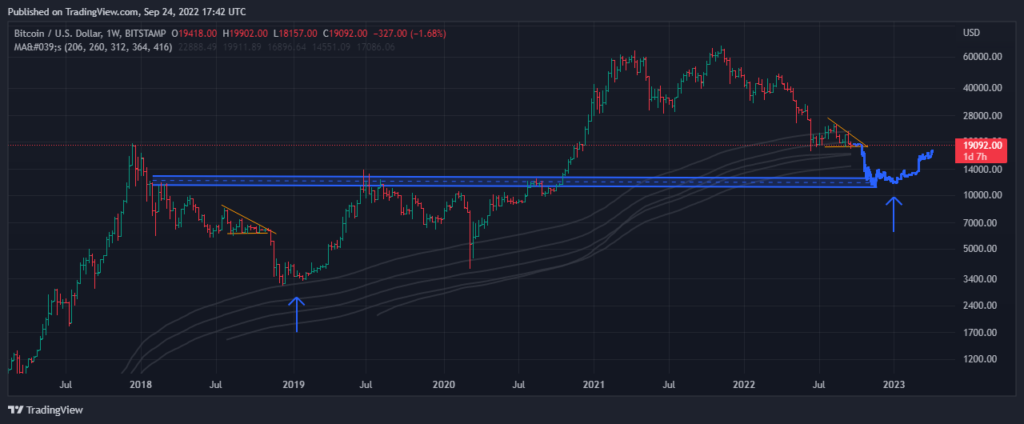Editor’s Note
We’re still sending this newsletter to your inboxes, delayed due to technical issues. Please bare with us.
Ethereum’s Merge: The Downside
By the time you read this, Ethereum, the popular smart contract platform, would have “merged”, or in other words, forked from Proof-of-Work into Proof-of-Stake. The merge will occur around September 15th, with a soft deadline of September 19th. So, let’s discuss what’s so special about Ethereum’s switch to proof of stake.
Cryptocurrencies have evolved significantly throughout the years since their first inception in 2009. There are currently thousands of projects competing over market share, driving innovation in the field. One of the innovations is a consensus mechanism used to create and verify blocks in a blockchain known as “Proof of Stake”. Ethereum’s developers, climate activists, and governments believe the way forward involves switching the chain from POW to POS. Many cryptocurrency users are against such a move as they believe POW was chosen for a reason. Everyone agrees that no consensus mechanism is perfect, and each possesses tradeoffs, specifically in the scalability, security, and decentralization areas.
Recently, Bitcoin, which relies on POW, has been heavily criticized by governments and climate activists over its power usage, which is the main advantage of POS as it doesn’t require the same amount of computing power. If you’d like to learn more about Bitcoin’s argument for POW please read our Signal “The Bitcoin Bull” in the member’s area.
The scalability of a blockchain is its ability to improve transaction speed, capacity, throughput, costs, fees, and efficiency. Proof of Stake currently takes the crown in scalability as it supports the fastest and highest number of transactions. Still, it doesn’t come without a massive tax in the form of less decentralization & security.
Security-wise, POS wins over POW, but not by a significant margin. 51% of attacks on the network are harder to conduct on POS networks since an attacker has to control the majority of coins and, by doing so, hurt themselves rather than taking control of 51% of the hash rate in POW.
Proof of Work & Proof of Stake both offer decentralized consensus mechanisms, but due to its incentive structure and economic drivers, Proof of Work possesses a greater level of decentralization & a lower amount of required trust than Proof of Stake. To become a network participant, Proof of Stake networks generally require a higher barrier of entry than Proof of Work ones.
Ethereum users do not have to do anything when before, during, or after the merge. Only node operators need to update their nodes. If you are not a node operator and someone is suggesting you need to do anything to safe keep/update/claim old/new coins, then you are likely talking to a scammer.
What the “Merge” will do & won’t do:
Will:
– Allow validators to receive fees & tips in the form of ETH in a non-staking account
– Fork the chain into Proof of Stake
– Initiate a difficulty bomb, making mining redundant
Won’t:
-Reduce gas fees
-Make transactions faster
-Allow withdrawal of staking rewards (Expected in “Shanghai upgrade”)
Fed Update
During the last FOMC meeting (where interest rate increases/decreases are announced), the Fed announced that they are increasing the interest rate by 75 BPS or, in other terms, 0.75%. This action has resulted in the 30-year mortgage interest rate increasing to 6.3%, the highest it’s ever been since 2008. This means that if you have a $300k mortgage, your monthly payment increased from $1,250 last year to $1,900, a 152% increase. Note that the Fed will keep increasing interest rates till they tame the rising inflation (we explained in previous newsletters & signal that they wouldn’t be able to do so, at least without bringing a global financial disaster). This means two things: new mortgage buyers who could afford a $500k house can now only afford a $300k one, which translates to lower demand and prices, and current non-fixed rate mortgage owners will have to either pony up the monthly payment increase (remember we are a time of liquidity starvation) or default and relief ownership to the bank. If the latter starts to happen, then we are currently looking at the next housing market bubble bursting as rising defaults have a domino effect, where banks own half the housing market, and no one can afford to buy—allowing you, a financially & economically well informed individual, to pick up properties for pennies on the dollar.
Monthly Technical Analysis
As the BTC price fluctuates further, the TBG community prepares for a potential crash. Will it be the last? If you consider this descending triangle we’re in, it’s almost exactly the same as the June-December trend of 2018; only this time, when the support breaks, we’re seeing ourselves around the $13k mark for another consolidation.
Disclaimer: Not financial advice. Please do your research before investing.

Like we discussed before, these price levels do match up with our previous TA reports. We haven’t touched the 300 Weekly Simple Moving Average line yet, which was one of the targets.
Whilst we much prefer historical data over TA ‘patterns’, it may be worth mentioning that a Head-and-Shoulder is possible. What it means is we won’t be that surprised if Bitcoin hits $22k one more time before going down. Either way, not much action this past month but we see an impulsive move on the horizon, HODL tight.

Sign in to read the full article
(It’s FREE!)
The Future of Economics
Access the latest market insights, technical/fundamental analysis, special reports on finance, crypto, digital assets and much more.


